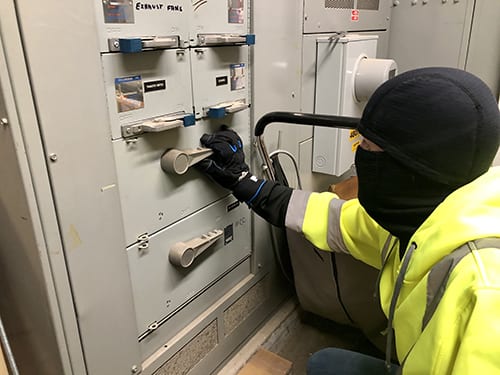 When working in an industry with burn risks, it’s important to understand NFPA 70E vs. NFPA 2112 standards, which address the importance of wearing the right flame-resistant (FR) clothing on the job.
When working in an industry with burn risks, it’s important to understand NFPA 70E vs. NFPA 2112 standards, which address the importance of wearing the right flame-resistant (FR) clothing on the job.
The National Fire Protection Association (NFPA) is a global, self-funded nonprofit organization that exists to reduce injury and loss by testing, researching and setting standards that minimize the risk of fire and electrical hazards.
Each year, many oil and gas specialists, electricians, lineworkers, chemical plant employees and professionals in similar industries die or are injured when coming into contact with arc flash or flash fire hazards – but that doesn’t have to be the case.
Benefits of FR clothing
When exposed to fire or high heat, ordinary clothing can quickly ignite, burn or degrade, potentially causing serious injury or death. The main benefit of FR material is its ability to self-extinguish quickly.
Employers are required by the Occupational Safety and Health Administration (OSHA) to assess the risks in their workplace and select appropriate PPE that protects against identified burn hazards.
What not to wear amid fire hazards
Workers should avoid clothing made up of synthetic materials such as acetate, nylon, polyester or rayon as these can worsen injuries. It’s important to talk to manufacturers to understand the amount of heat intensity that will ignite material, which largely depends on weight, texture and weave.
Untreated cotton has a low ignition temperature of approximately 480 degrees and burns intensely and rapidly. Untreated polyesters and nylons ignite easily at 480 to 660 degrees and melt readily. Cotton/polyester blends combine the worst qualities of both fabric in terms of ignition and melting.
Considering an arc flash can reach temperatures of over 35,000 degrees, it’s crucial to understand NFPA 70E vs. NFPA 2112 safety standards.
NFPA 70E vs. NFPA 2112: Know the difference (FREE DOWNLOAD)
Professionals will find a variety of FR workwear that meets either one standard or the other, with a small percentage of gear meeting both standards.
FREE DOWNLOAD: Comparison chart explaining NFPA 70E vs. NFPA 2112
- NFPA 70E: This standard focuses solely on fabric, and manufacturers can test products themselves. NFPA 70E was developed to protect electrical workers in all industries who work on or near energized equipment capable of generating an arc flash. This includes high-voltage switching and grounding gear, panel boards, switchboards, motor control centers, motor starters, metal-clad switchgear, transformers and meters.
- NFPA 2112: Addressing both fabric and the finished garment, this standard states that FR clothing must be tested and certified by a third party. NFPA 2112 focuses on protecting industrial personnel against short-duration thermal exposure from industrial flash fire hazards, providing minimum requirements for the design, construction, evaluation and certification of FR garments.
This blog post was drafted in partnership with Ergodyne. Check out Ergodyne’s original article, “Understanding NFPA 70E and NFPA 2112 FR standards – dual compliance.”
Related posts
Asbestos in construction | 5 tips to prevent exposure, mesothelioma
Student housing trends for 2020 | More amenities in residence halls